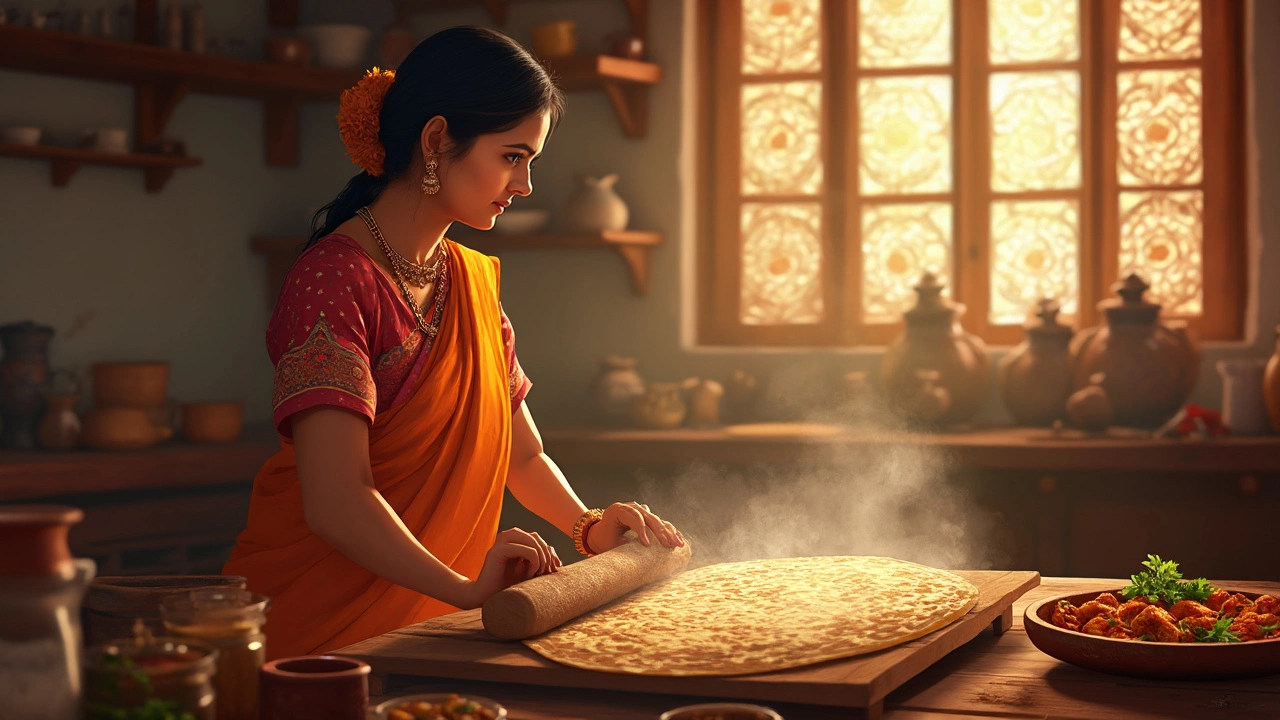Roti Calorie Content: What’s the Real Number?
When talking about Roti calorie content, the amount of energy a single roti provides based on its ingredients, size, and cooking method. Also known as roti calories, it matters for anyone tracking daily intake or trying to keep meals balanced. Roti, a thin, unleavened Indian flatbread made from whole‑wheat flour, water and a pinch of salt is the canvas; Calories, units of energy that foods provide, measured in kilocalories (kcal) are the metric we use. Understanding this link helps you adjust recipes, control portion size, and stay on track with health goals.
Key Factors That Shape Roti Calories
calorie content roti isn’t a fixed number – it shifts with three main variables. First, the flour type decides the base energy: whole‑wheat flour typically offers 340 kcal per 100 g, while refined atta can be a bit higher. Second, the dough’s hydration level matters; more water means a lighter bite without adding calories. Third, the cooking technique influences the final count – a dry skillet adds no extra fat, but a brushed‑with‑oil tawa can bump the total by 20‑30 kcal per roti. These elements together create a semantic triple: Roti calorie content requires ingredient choice, is affected by cooking method, and encompasses portion size.
Size is another easy tweak. A 30 g roti (about 8‑inch diameter) holds roughly 100 kcal, while a larger 45 g version can climb to 150 kcal. If you’re counting, use a kitchen scale – it’s the most reliable way to know exactly what you’re eating. For those who prefer estimates, a standard medium roti is about 100 kcal, a small one around 80 kcal, and a big one 130‑150 kcal. This simple rule‑of‑thumb helps you plan meals without pulling out a calculator every time.
Nutrition doesn’t stop at calories. Roti contributes fiber, protein, and micronutrients like iron and B‑vitamins. Whole‑wheat versions deliver about 3 g of fiber per roti, supporting digestion and satiety. Adding a dash of ghee or butter can improve flavor and increase absorption of fat‑soluble vitamins, but it also adds about 45 kcal per teaspoon. If your goal is a lighter flatbread, try spraying the pan with a mist of oil or using a non‑stick surface. You’ll keep the soft texture while keeping the calorie count closer to the base flour value.
All these details set the stage for the articles you’ll find below. We’ve gathered tips on puffing roti, using oil at the right stage, and even when (or when not) to add baking soda. Whether you’re a beginner looking to master the perfect chapati or an experienced cook aiming to shave off a few calories, the collection offers practical advice, science‑backed explanations, and quick hacks to make every roti count. Dive in and discover how small tweaks can lead to healthier, tastier meals.

Calories in 1 Roti: Understanding Your Daily Diet
Diving into the nutritional aspect of a staple in many diets, we break down the calories in a single roti. Explore how much calories are in 1 roti, plus variations with ghee or paired with sabzi. Learn practical tips for managing calorie intake while still enjoying your meals. Perfect for those seeking a balanced diet without sacrificing traditional flavors.